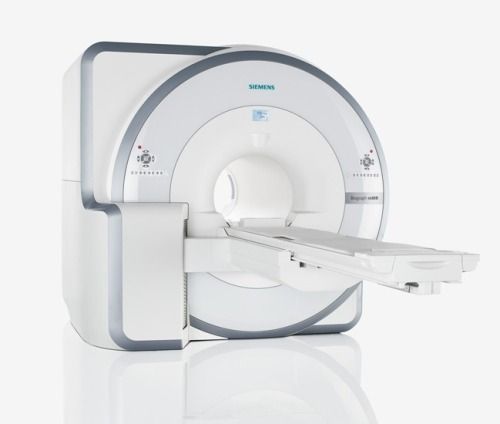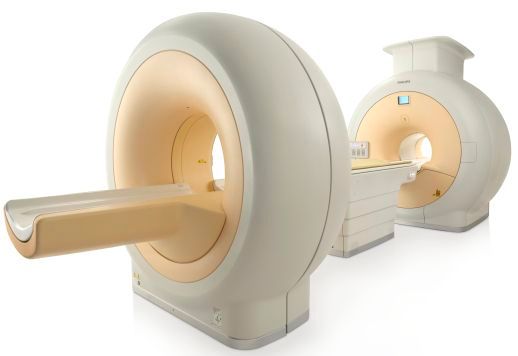PET/MRI: Implementing, Reading, and Billing New Technology
The promise of PET/MRI is clear, but challenges remain when it comes to implementing, reading and billing the new technology. This is the second in a two-part series.
Siemens Biograph mMR

Philips Ingenuity TF PET/MRI

This is second in a two-part series investigating PET/MRI’s status and future two years after FDA approval. The first part examined changes in workflow and protocol.
With any new technology comes growing pains. And those incorporating PET/MRI machines into their workflow are feeling them. While there’s no doubt about the excitement and promise of lower radiation imaging with higher quality visualization for certain studies, getting to a smooth workflow and maximizing the technology’s benefits involves time and experimentation. Fortunately those in the trenches can share their experience.
The technologies available are Siemens’ Biograph mMR model, which gained FDA approval in June, 2011, and the Philips Ingenuity TF, approved that November. The Siemens machine performs PET and MRI scans simultaneously, while Philips’ hybrid system scans sequentially.
For Victor Seghers, MD, PhD, head of the pediatric radiology nuclear medicine section of Texas Children’s Hospital (TCH), the sense of hopefulness he heard in lectures and conferences about PET/MRI before they were on the market turned to a focus on the reality of implementation once available. That reality means disruptions in workflow and scheduling, turf battles of which technologists will perform the studies and which physicians will read them, and figuring out how to bill for studies.
The upsides of PET/MRI are well known. MRI provides functional imaging, combined with PET’s metabolic activity, making it valuable for diagnosing and staging various cancers and for neurological applications like ruling out Alzheimer’s disease and finding seizures foci. While PET uses radioactive tracers, MRI adds no additional radiation (unlike CT), making it ideal for children and those needing multiple studies.
TCH invested in PET/MRI because of the radiation dose savings, after reading many studies about CT radiation risks particularly in the pediatric population. Vendors estimate a 40 percent reduction in radiation, depending on the study type, Seghers said.
Difficulties with Implementation
Robert C. McKinstry, III, MD, PhD, radiology professor at Washington University School of Medicine (WUSM) said his facility has spent the most time on workflow innovation. That includes looking at how to perform the exams efficiently. Almost two years after installing the Siemens machine, they can do a full menu of clinical exams, including the whole body, brain, pelvis and cardiac region. “We made a lot of gains,” he said. “We know what kind of information it can give us and we’ve tailored our workflow around that.” WUSM was third in the U.S. to install the Siemens unit, and the first U.S. hospital-based unit.
To learn how to work the machine and use it to its fullest, the WUSM staff worked with Siemens on the scanner development and user interface. They participated in user meetings domestically and internationally, sharing experiences and workflow ideas. Their PET/MRI steering committee meets twice monthly, and includes users and vendor representatives. “I think the device is in rapid evolution,” McKinstry said. “It’s been a really active process.”
For Seghers, whose facility just installed the Philips Ingenuity in May, “It’s a very disruptive technology in terms of workflow,” he said of PET/MR in general. “This is not easy. Changing existing workflow and patterns is very difficult on the scheduling side.”
The hospital’s nuclear radiology section was centralized three years ago, Seghers said, merging nuclear medicine with pediatric radiology. They present weekly at the oncology conference, helping to solve oncologic imaging problems across all modalities. “These improved relationships made the task of planning for PET/MR much easier,” he said. “We were able to bring the oncologists on board and ask what information would be of value to them. We get interest from them and input on how to make things less confusing from an ordering and scheduling perspective.”
While TCH plans to use their PET/MRI machine for clinical use in a year, they’re starting out by doing only research scans. Seghers said this would allow them to explore new imaging algorithms, learn to maximize use of nuclear radiology and MRI technologists’ skill sets, create new electronic ordering algorithms, demonstrate value, and educate referring clinicians on the differences between PET/CT and PET/MRI.
WUSM’s medical center is also focusing initially on research cases before adding clinical work to the mix, McKinstry said. They are only currently scanning adults. The technology is especially advantageous for pediatrics for whom CT radiation exposure may be more damaging. He added that the amount of radiation and a person’s life duration are key determinants in potentially developing a future cancer. “For young adults and children, this is going to be the go-to machine,” he said.
The challenge for adding pediatric cases into the workflow is that they often require sedation, which can disrupt the routine. Sedated patients need a physician or nurse anesthetist present at the scan, and that’s another layer of coordination and timing to consider. For now, McKinstry said they need to get an efficient routine down with adults first.
Who Will Read It?
[[{"type":"media","view_mode":"media_crop","fid":"13927","attributes":{"alt":"","class":"media-image media-image-right","id":"media_crop_130326805237","media_crop_h":"0","media_crop_image_style":"-1","media_crop_instance":"658","media_crop_rotate":"0","media_crop_scale_h":"0","media_crop_scale_w":"0","media_crop_w":"0","media_crop_x":"0","media_crop_y":"0","style":"float: right; margin: 5px;","title":"Clinical whole-body image created using Siemens’ Biograph mMR. Credit: Siemens Healthcare","typeof":"foaf:Image"}}]]Radiologists reading the scans will find they look different than PET/CT, said Seghers. The attenuation correction sequence takes longer with MRI than CT. With that added length of time, there are more motion artifacts. It doesn’t necessarily impair the ability to interpret the study, but there will be more respiratory and bowel motion artifacts. On CT the image takes 1 to 2 seconds to acquire, versus 10 to 12 minutes with MRI.
Determining who will read the scans is another issue, according to Omer Aras, MD, an incoming assistant attending radiologist at Memorial Sloan Kettering Cancer Center in New York. Nuclear medicine doctors have no knowledge of MRI, which is complex to read. “You have many sequences to go over and it becomes complicated to evaluate,” he said. Aras added that at Memorial Sloan Kettering, most of the physicians are board certified in both nuclear medicine and radiology, so it’s less of an issue there. In centers without that specialization, he would assume the nuclear medicine physician would read the PET scan only, with the MRI read by a radiologist, similar to how it’s done with PET/CT. The physicians could then review the case together, presenting a combined report.
Turf Battles: Who Runs PET/MRI?
There can be additional turf battles between the nuclear medicine and radiology departments in which one houses and runs the machine. With a centralized department at TCH, that hasn’t been a problem, said Seghers. However they have the MRI technologists running the machine, which he said was less controversial than one may think, especially since nuclear techs run the PET/CT machines. For PET/MRI, the MRI technologists position and image the patient, including both the PET, MRI attenuation-correction sequence, and clinical MRI sequences. The nuclear radiology technologists supervise the tracer injection and uptake, and perform the machine’s quality control. “This maximizes the skill sets of both types of technologists,” he said.
The nuclear radiology and MRI departments are adjacent, sharing a common patient recovery area for sedation to maximize workflow, communication, and image acquisition and processing.
They’ve had to work with the technologists on other areas, though. The MRI techs are used to using machines with zero radiation, and that’s now changed. The staff needs to make sure the nuclear radiology techs get proper credit for their behind-the-scenes role, since they are not in control of the new machine.
If David Gilmore, MS, CNMT, RT, program director of Regis College’s Medical Imaging Program has his way, the two types of techs will be co-certified to run both PET and MRI. He said the Society of Nuclear Medicine and Molecular Imaging (SNMMI) and Society of Magnetic Resonance Technologists (SMRT) already have pathways set up. “We don’t have the same barriers as with PET/CT, as to who can operate the system,” he said. “There are no states out there right now who are legislating who can do MRI.”
The Challenge of Reimbursement
There is no CPT code for PET/MR, which makes billing more difficult and complex, said McKinstry. If the physician orders MRI for diagnostic information, they would bill for the MRI code and PET code. It’s unclear how payers will respond. He’s heard that some payers see the technology as investigational even though it’s FDA approved, and Siemens and Philips individual PET and MRI scanners are excellent quality.
WUSM recently received their state’s Certificate of Need, which he said is necessary for billing, and that opens up the PET/MRI to more patients. They also need to put the billing system in place internally.
“We’re excited,” he said, “to be able to provide this to our patients as a purely clinical diagnostic exam.”
Part one of our series focused on PET/MRI versus PET/CT, the best applications of the technology, and PET/MRI for research versus clinical exams.
Study: Monitoring of Prostate MRI Exams Could Lead to 75 Percent Reduction of Gadolinium Contrast
March 17th 2025While DCE MRI was deemed helpful in over 67 percent of cases in which it was used, researchers found that monitored prostate MRI exams, which facilitated a 75 percent reduction of DCE MRI sequences, had comparable sensitivity for prostate cancer as non-monitored exams.